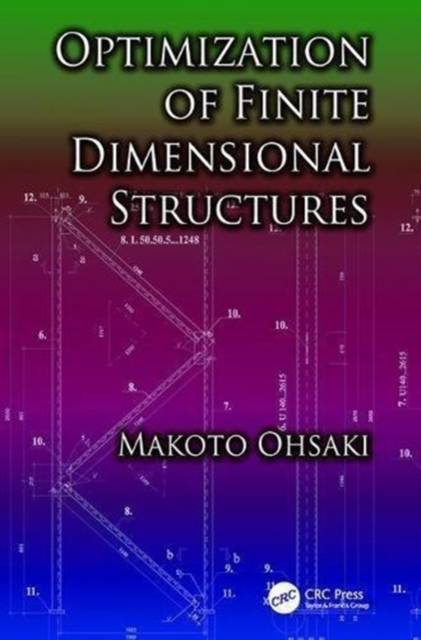
- Retrait gratuit dans votre magasin Club
- 7.000.000 titres dans notre catalogue
- Payer en toute sécurité
- Toujours un magasin près de chez vous
- Retrait gratuit dans votre magasin Club
- 7.000.0000 titres dans notre catalogue
- Payer en toute sécurité
- Toujours un magasin près de chez vous
Description
Originally developed for mechanical and aeronautical engineering, structural optimization is not so easily applied to civil and architectural engineering, as structures in these fields are not mass products, but more often unique structures planned in accordance with specific design requirements. The shape and geometry of such structures are determined by a designer or an architect in view of nonstructural performance that includes aesthetics. Until now, books in this area gave little help to engineers working in cooperation with designers, as they covered conceptual material with little consideration of civil engineering applications, or they required a solid background in applied mathematics and continuum mechanics, an area not usually studied by practicing engineers and students in civil engineering.
Optimization of Finite Dimensional Structures introduces methodologies and applications that are closely related to design problems encountered in structural optimization, to serve as a bridge between the communities of structural optimization in mechanical engineering and the researchers and engineers in civil engineering. This unparalleled, self-contained work:
- Provides readers with the basics of optimization of frame structures, such as trusses, building frames, and long-span structures, with descriptions of various applications to real-world problems
- Summarizes the historical development of methodologies and theorems on optimization of frame structures
- Introduces many recently developed highly efficient optimization techniques presented with illustrative examples
- Describes traditional problems with constraints on limit loads, member stresses, compliance, and eigenvalues of vibration, all in detail
- Offers a unique look at optimization results for spatial trusses and latticed domes
Mathematical preliminaries and methodologies are summarized in the book's appendix, so that readers can attend to the details when needed without having to wade through tedious mathematics in the explanatory main chapters. Instead, small examples that can be solved by hand or by using a simple program are presented in these chapters, making the book readily accessible and highly useful for both classroom use and professional self-study.
Spécifications
Parties prenantes
- Auteur(s) :
- Editeur:
Contenu
- Nombre de pages :
- 439
- Langue:
- Anglais
Caractéristiques
- EAN:
- 9781138113657
- Date de parution :
- 14-06-17
- Format:
- Livre broché
- Format numérique:
- Trade paperback (VS)
- Dimensions :
- 156 mm x 233 mm
- Poids :
- 452 g

Les avis
Nous publions uniquement les avis qui respectent les conditions requises. Consultez nos conditions pour les avis.






